The Grid is the Bottleneck
With all of the talk about AI datacenters, EV’s, and the tax credit changes from the One Big Beautiful Bill, electricity is getting a ton of airtime these days. I love it - as an electricity nerd, it's great that the importance of this physical phenomenon and the infrastructure + economics that support it are more in the public’s mind now than perhaps ever before. One key element to the discussion is missing, however, and that’s the grid. Especially as it relates to politics, energy discussions normally surround the production of energy, not how it gets from where it's produced to where it's consumed. This is a big oversight in the current discourse, as I believe that the grid is actually the piece of the puzzle that needs the most attention.
The post below is intended to be introductory and high level.
What is The Grid?
First, let's separate out the three portions of the electricity ecosystem: 1) generation, 2) transmission/distribution (a.k.a “the grid”), and 3) consumption. In most cases, energy is not generated or stored where it is used. Historically, this was because dirty oil and coal plants would need to be located outside of cities to avoid nearby air pollution, and located near rivers or bodies of water.
As such, transmission infrastructure was built to bring the produced electricity from the power plant close to the city center. Transmission wires carry large amounts of power at high voltage, and are typically built on tall structures far from buildings and other infrastructure. The higher the voltage, the smaller the wire size for a given power and the less heat losses, so the higher voltages here tend to be more efficient. Higher voltage requires larger clearances and more complex infrastructure on either end, increasing costs.
Transmission runs to substations near city centers, where the voltage is reduced to “medium” voltage, sometimes referred to as “distribution” voltage. Substations are basically just yards with big switches and transformers (which I detailed here) where transmission wires go in, and distribution wires go out.
Substation, source: OSHA
The substation has a number of “feeders” which run out from it almost all the way to the home or business. Right before entering the home or business, another transformer is used to step down voltage even further (typically to 240v for homes or 208v or 480v for businesses). These feeders typically run shorter distances than transmission wires, as they are at lower voltages. For the most part, when you see grid infrastructure, you’re looking at distribution wires.
Electric distribution
Peak Is What Matters
Any time a new load (think: an EV charging station, new AI data center, or new home community) needs power, it adds additional load onto the existing grid infrastructure that it's connected to. As grid infra is really expensive to build, oftentimes there’s not a lot of peak capacity available. So, new grid infrastructure often needs to be built, resulting in long wait times for new loads to be connected. This is a hindrance to building those loads, of course. Notice how I bolded the word peak. This is because the grid infrastructure needs to be built to support peak demand, not average demand. This might sound intuitive, but is a critical point: peak loads being much higher than average loads often drive overbuilding of grid infrastructure for most of the time. Here in Texas, loads can fluctuate by upwards of 50% throughout the year.
This is where the ability to turn off the load or support the load with on-site storage, comes into play. If you store energy on-site where the load is, you can discharge that storage into the load during peak grid events, thereby reducing the load on the grid during that period of time. Fundamentally, this is the benefit of distributed storage, which Base Power is focusing on.
Said differently, you can basically have more load on the grid than the grid is able to handle at peak, by the amount of storage you have co-located with the load. As such, at the grid system level, you can trade between building bigger and more transmission, substations, and distribution, or you can put energy storage where the loads are. The nice thing about doing the latter is that you increase the overall system efficiency: the batteries charge when demand is low, increasing the utilization of the lines during those times. When demand is high, you can remove the load from the grid and support it with the battery, limiting the need to build more under-utilized infrastructure.
Generation Is Being and Will Be Solved
All of the above highlights the challenges that the grid faces, not the generation stack. Obviously, you need to make all of the power that is consumed over a given time period somehow. While this is an important topic, including how that power is generated, my opinion is that this is a mostly solved issue with market dynamics at play.
In most places, power plant owners and operators are not ‘monopolies’ in the same way that the utilities who own the grid infrastructure are. It varies by region in the US, but for the most part, as a power plant owner you’re either paid for every unit of energy you produce, or you’re paid for your ability to be on call when the grid operator tells you to produce. The price that you’re paid is roughly driven by supply and demand - market forces. So, as there’s more load added to the grid, in general, higher prices drive people into the market to produce power.
By Nuclear Regulatory Commission - http://www.nrc.gov/images/reading-rm/photo-gallery/20071116-024.jpg, Public Domain, https://commons.wikimedia.org/w/index.php?curid=3429401
There are many forms of generation, each with different grid effects and economics. Right now, in most of the US, renewables, specifically solar, are the cheapest way to generate electricity. Given solar’s obvious time dynamics, pairing with batteries for the ability to extend production hours is key. Other technologies such as coal, gas, and nuclear are considered ‘dispatchable’ - meaning you can turn them on and off as you wish. This is a great feature of a power generator, although it comes at a cost. The cost of coal and nat gas is essentially the cost of the input fuel, whereas the major cost of nuclear is the up front investment (uranium is cheap as a fuel compared to its power output). So, rational economic actors - without market manipulation from the government - will tend to deploy solar alongside batteries to produce electricity.
Source: By RCraig09 - Own work, CC BY-SA 4.0, https://commons.wikimedia.org/w/index.php?curid=99427431
It hasn’t always been this way - solar and wind have dropped dramatically in cost of the past few decades. It used to be that the main reason for deploying solar was environmental, which drove its politicization, oftentimes being associated with left-leaning politics. This simply is no longer the case, and I’m here to tell you that many many many right-leaning people have their entire careers wrapped up in solar.
Solar isn’t liberal or conservative - it's just fast and cheap.
Fundamentally the argument is: free market forces will drive more energy production onto the grid, and that energy production will be a combination of the cheapest and quickest to deploy. This is currently solar, but in the future may be nuclear or other technologies. And that’s great!
The Grid Needs Help
This prior argument is not the case with the grid, for the most part.
Even here in Texas, the grid infrastructure owners are monopolies - there is generally not competition to own transmission and distribution infrastructure, and there are not duplicative sets of infrastructure such that producers and consumers can pick which one to connect to. Grid owners & operators are often referred to as “utilities”, which are (again, for the most part) allowed to have monopolies by their state governments under an incentive structure called Rate Basing. All this means is that the governments allow these monopolies to earn a return on the amount of money they spend. If they spend $1, then the utility can earn (via charging the users of their grid) typically 9-10% on that. If you squint a bit, this is similar to how defense contractors make money; in that industry it's referred to as “cost plus”.
It doesn’t take a PhD economist to understand why this doesn’t drive the most optimal behavior. In this structure, the utilities work with their state governments to be able to spend as much as possible, not operate as efficiently as possible. And, because they don’t have competition, they don’t need to worry about someone else coming in and taking their market share. Furthermore, the utilities spend the vast majority of their focus on unlocking those additional dollars from the state governments, instead of developing new operations or technologies to reduce their costs.
The end result of the above is a system whereby producers (and importantly, new and more consumers) do not have a rational economic actor as a counterparty who wants to improve the quality and efficiency of their service. You can see this in perhaps my favorite chart of all time, below. The cost of energy is going down, and the cost of delivering that energy (through the utilities’ infrastructure) continues to go up.
Grid costs are increasing the end cost of energy, and there are minimal market forces to drive these costs down. Without changes, these costs are likely to continue going up, taking up an increasingly large share of the cost of delivered energy and holding back American industry along with it.


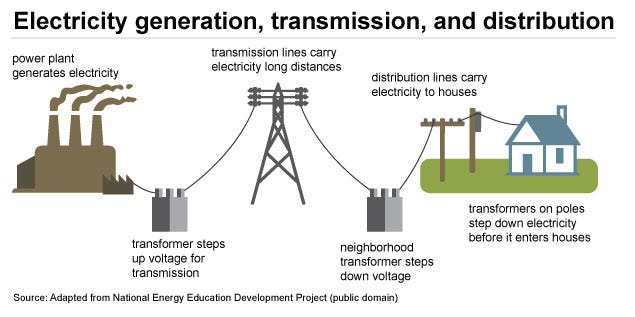
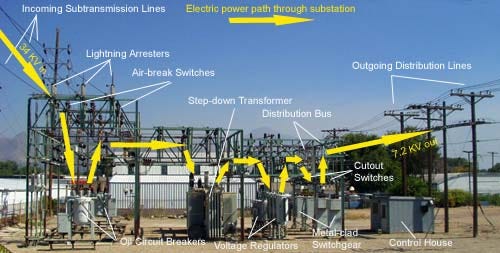
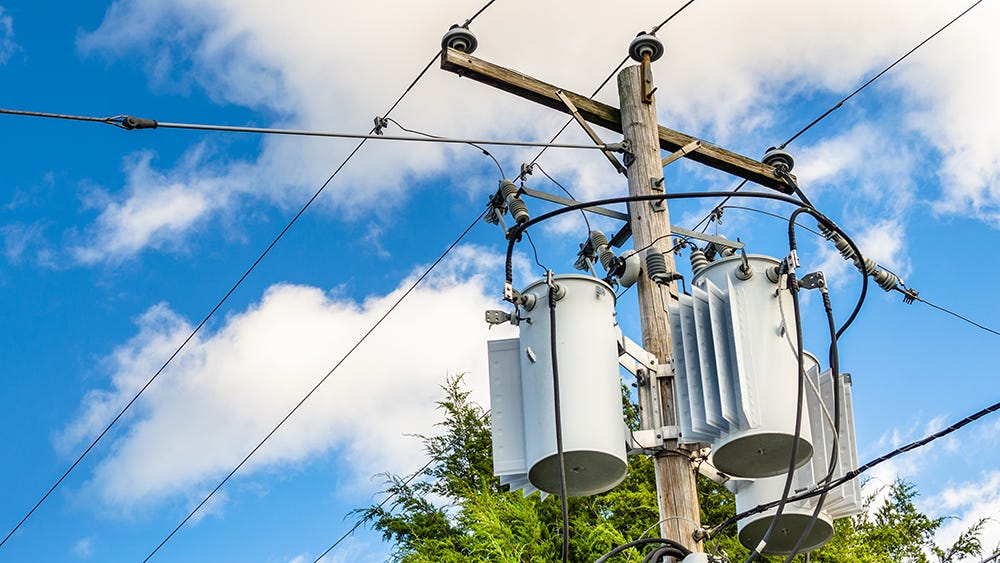
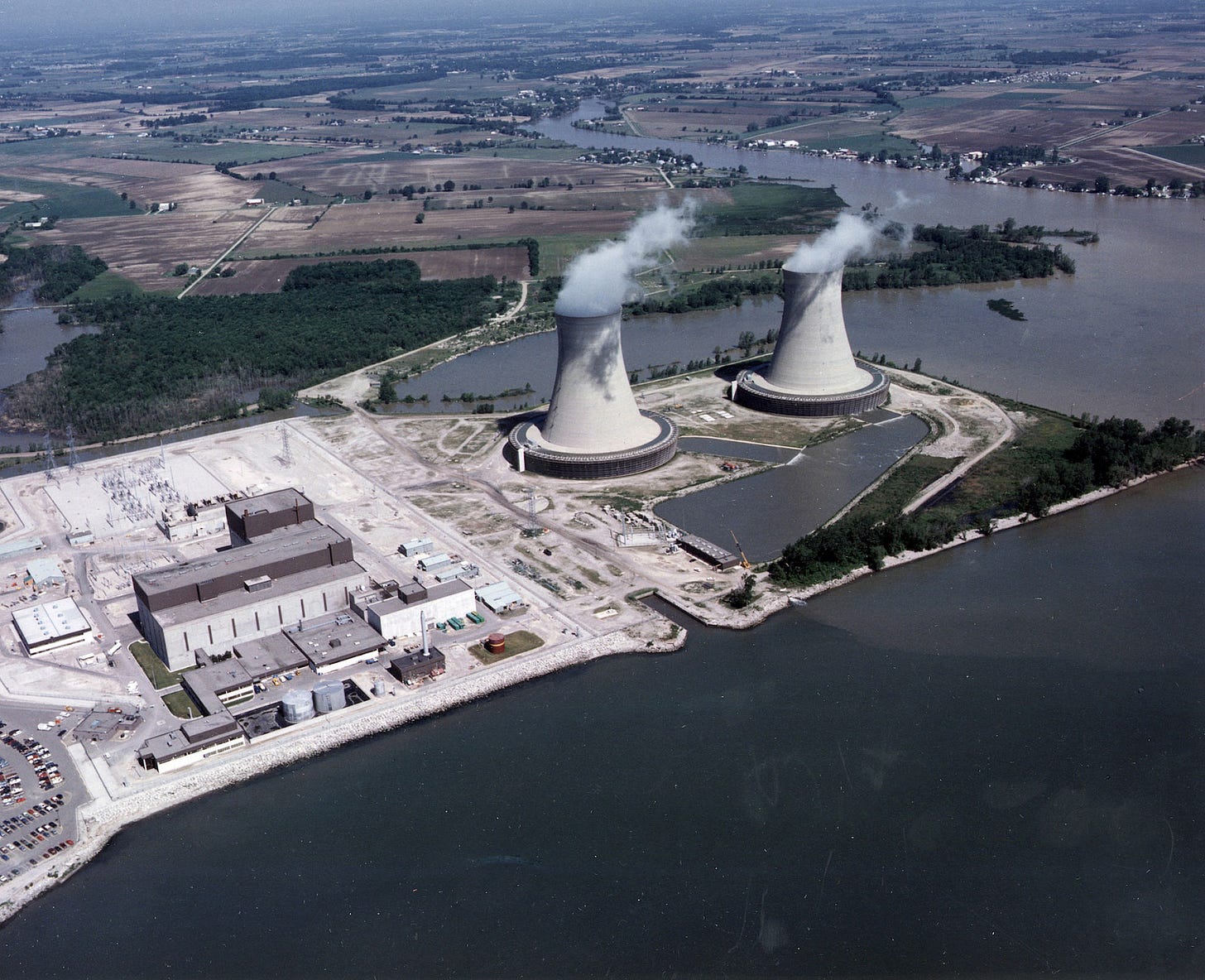
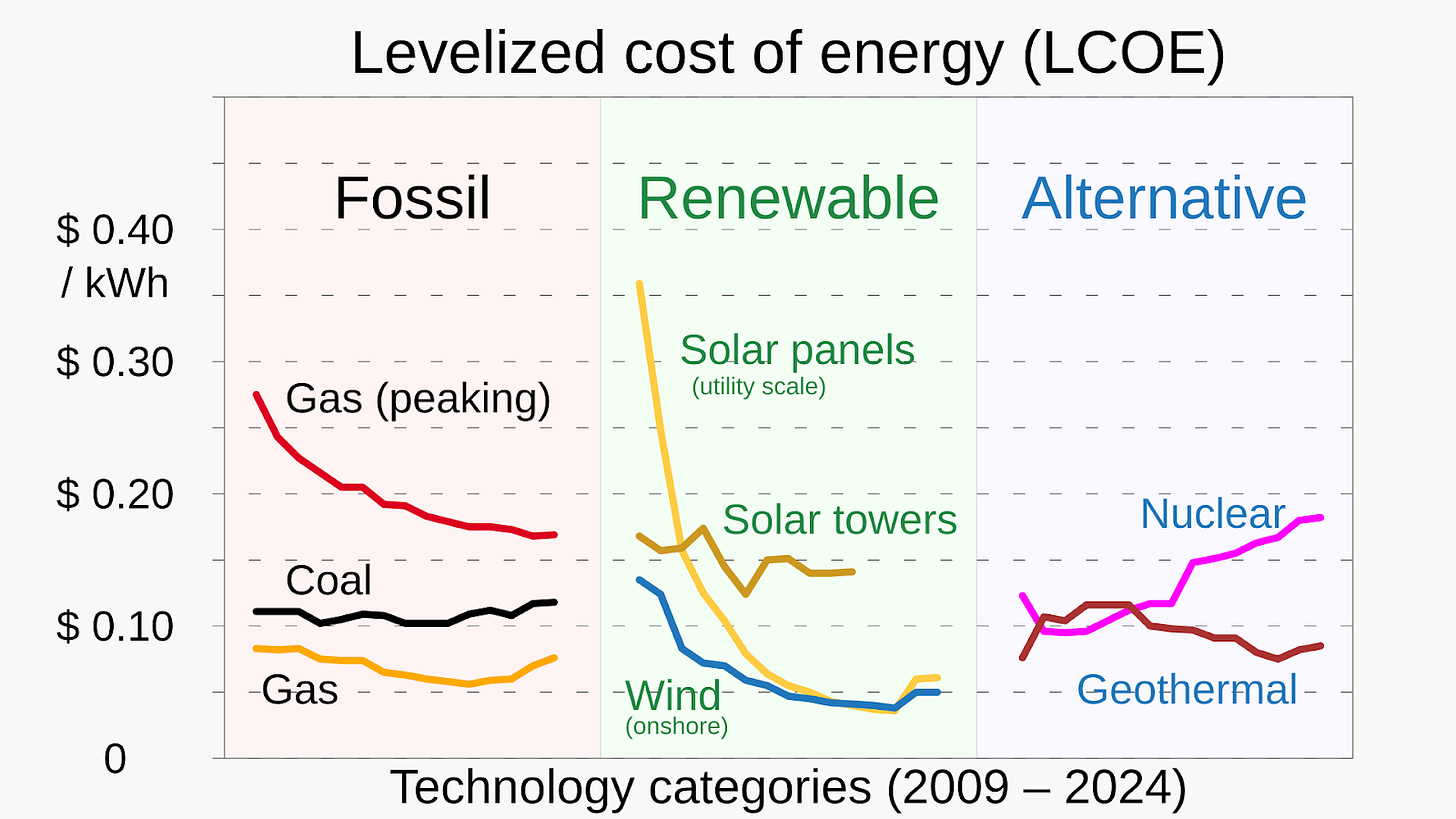
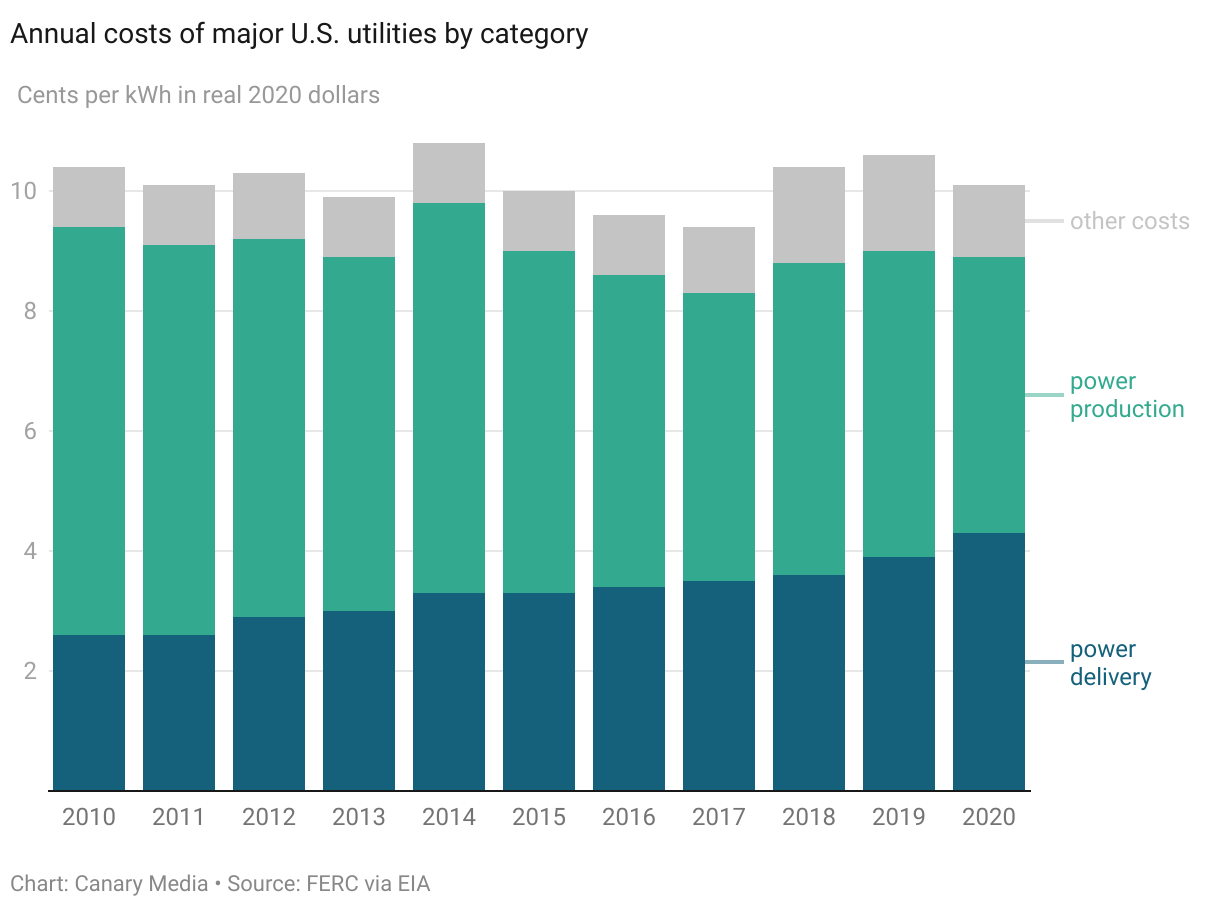
Thank you for the great insight Justin!
Reminds me of the book 'How Big Things Get Done', Solar and Batteries are modular, which means it is easy and cheap to scale production capacity, if you have the land available. Nuclear is on the other the other extreme, with cost and time overruns. Hence the push for modularized reactor technology.
This piece nails a problem most people don’t even know exists. Generation gets the headlines, but it’s transmission that’s quietly throttling American growth.
Everyone’s racing to build EV chargers, data centers, and solar farms. But if the wires can’t carry the juice—or the utility won’t upgrade them for five years—you’re stuck. Worse, the monopoly utility structure means these grid owners are rewarded for spending more, not for solving problems faster or cheaper. It’s “cost-plus” economics without the war.
So if utilities don't have any incentive to fix the chokepoint quickly, what will it take to build a power system that actually scales?